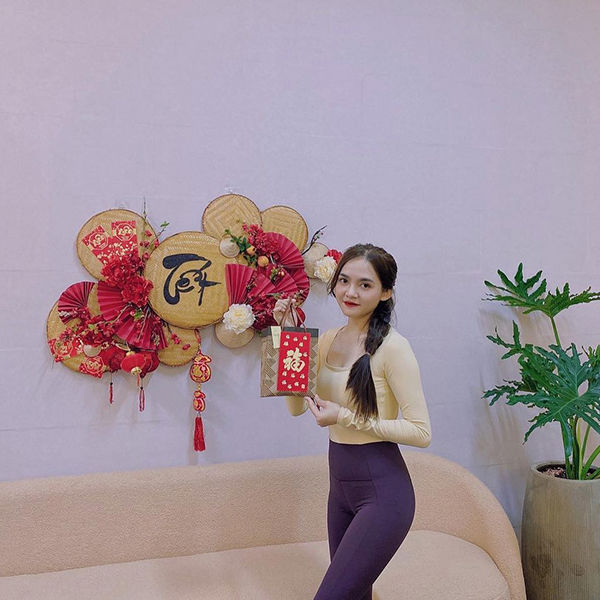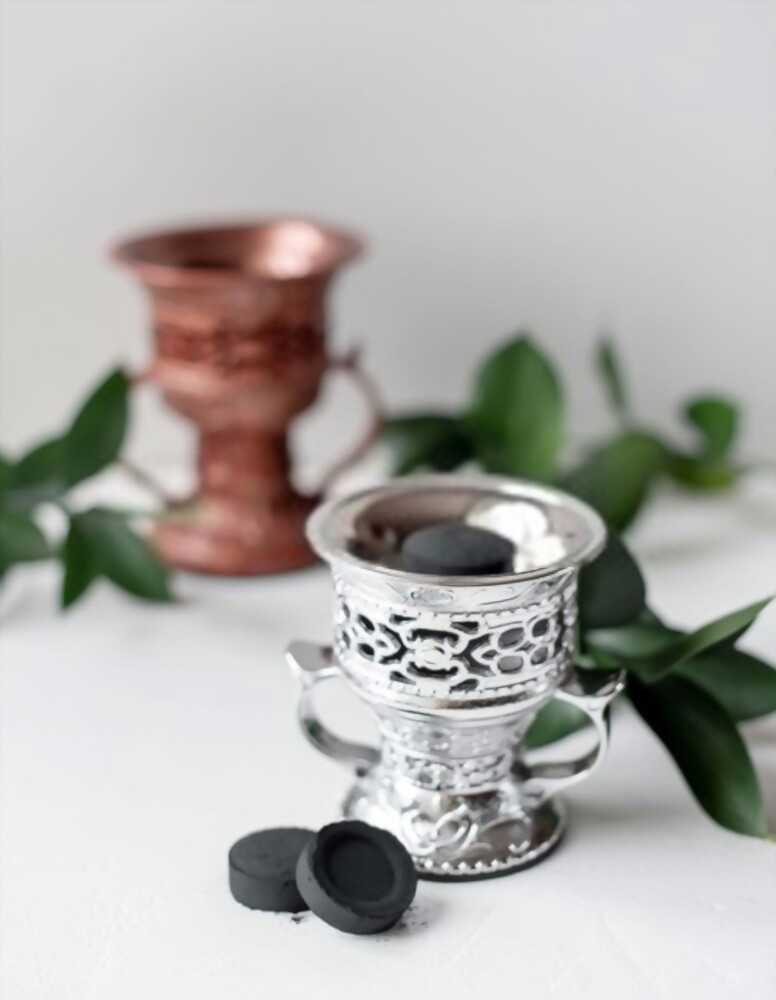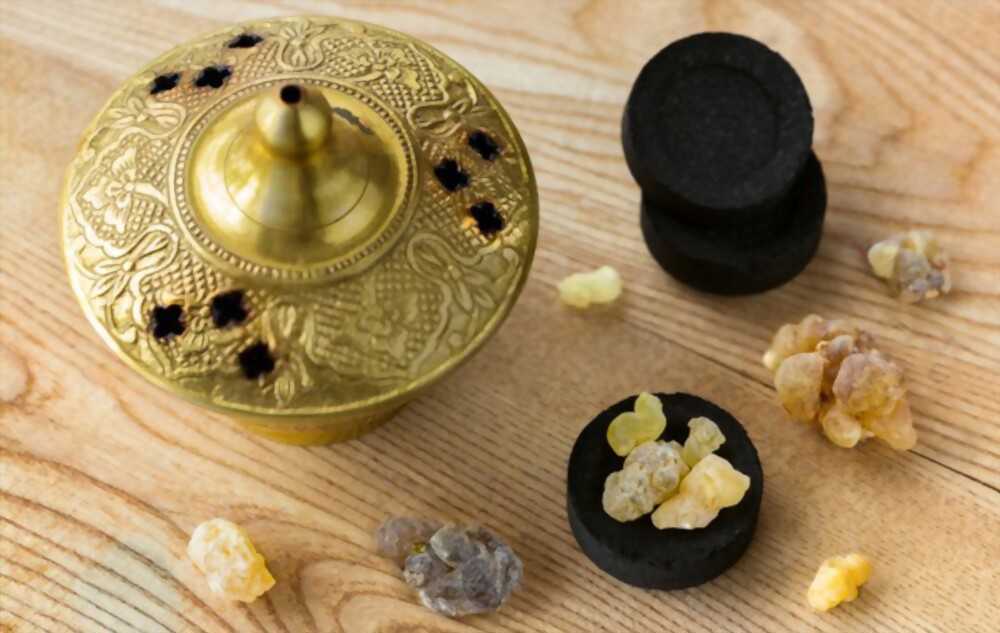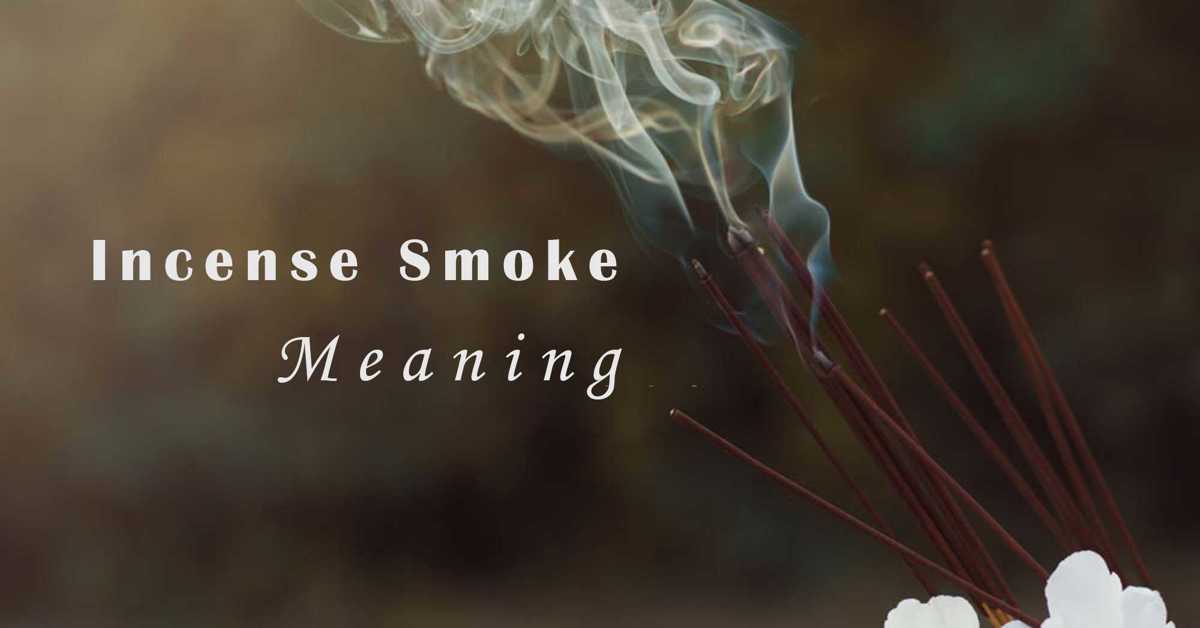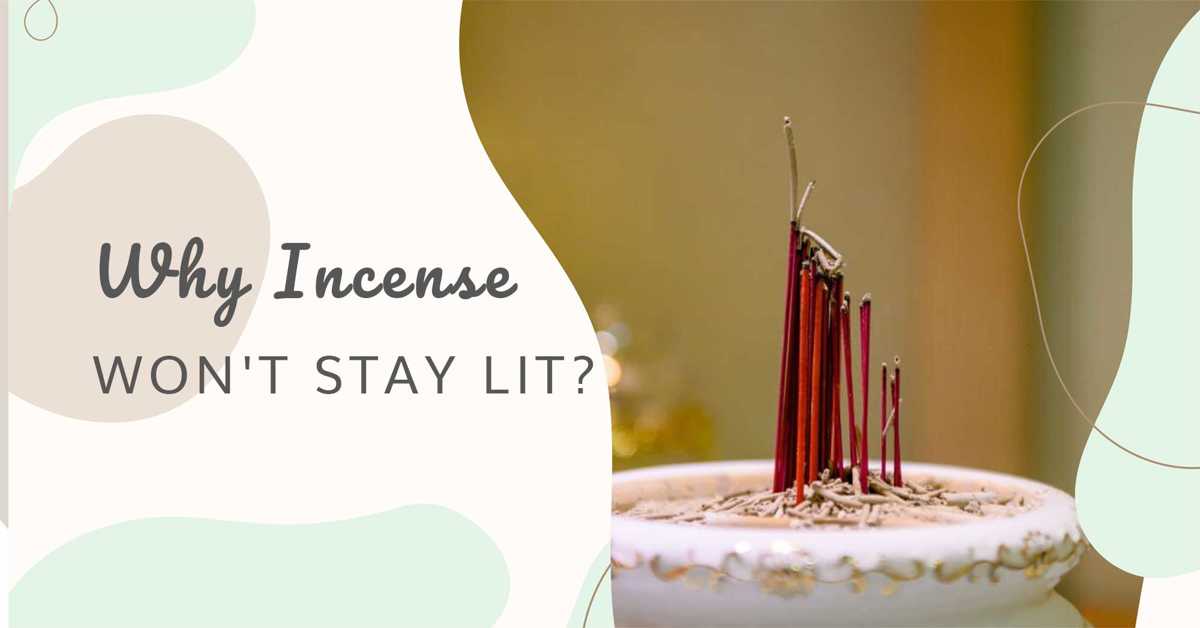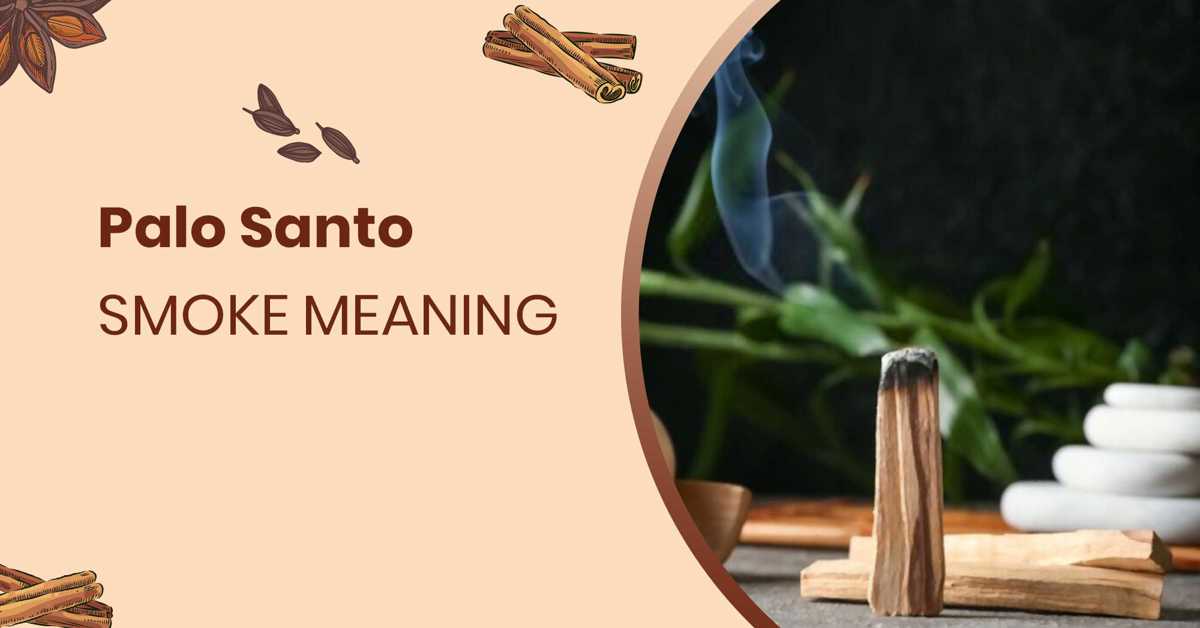Incense has been used for centuries in religious and spiritual ceremonies. It is believed to purify the air and create an atmosphere of peace and tranquility. Burning incense is also a great way to relax and enjoy the moment.
Some people like to light a stick and let it burn until the scent fills the room. Others like to put a cone or tablet on a burning charcoal disk. Whichever method you prefer, using charcoal can add an extra dimension to your experience. In this post, we'll show you how to use charcoal for incense burning and share some of our favorite tips and tricks. Let's get started!
- Method 1: Burning incense directly on the charcoal
- Method 2: Burning incense with charcoal in the traditional Japanese style
- Method 3: Indirectly heat incense through a censer
- Some important notes
- Which types of incense are suitable for burning with charcoal?
- So which charcoal is best for burning incense?
- Conclusion
There are many ways to use charcoal to burn incense. One way is to purchase pre-made charcoal discs that come with a metal holder. This type of charcoal is lit with a lighter or match, and then the desired amount of incense is placed on top of the disc. The heat from the burning charcoal will cause the incense to smoke.
Another popular way to burn incense with charcoal is to prepare your own cup of Kodo. This is the traditional Japanese way of burning incense, it is a relaxing and enjoyable experience.
Another option for burning incense with charcoal is to use a censer. Censers are often used in religious or spiritual ceremonies and can be made from a variety of materials, including metal, ceramic, or even stone. To use a censer, charcoal is placed in the bottom chamber and then lit. Incense is then added to the top chamber where it will smolder and release its fragrance.
Here are detailed instructions for each.
Method 1: Burning incense directly on the charcoal
In order to burn incense directly on the charcoal, you will need:
- Incense burner (or a heatproof dish or bowl)
- Heat-resistant materials (such as sand, ash, or even small pebbles)
- Specialized charcoal for burning incense
- Clamps to hold hot coals (such as tongs or tweezers)
- Your favorite incense (can be resin, powder, or loose)
- And finally matches or lighters
Step 1
To begin, light your piece of charcoal using a lighter or matches. Once the charcoal is burned, let it sit for a minute or two to allow it to get going.
Step 2
Hold the flame to the briquettes until they start to glow red, then blow out the flame so that the briquettes are still lit but not flaming.
Step 3
Now it's time to add your incense. Place the incense on top of the glowing briquettes. You may need to experiment a bit to figure out how much incense to use - too much may smother the charcoal, and too little and the incense may not burn well.
Step 4
The incense will start to smoke and release its scent. Use tongs or chopsticks to move the incense around if necessary
Step 5
The heat from the charcoal will cause your incense to start smoking. Enjoy the fragrance!
Watch the video below to learn how to do it in detail!
There are both advantages and disadvantages to burning incense directly on charcoal briquettes. One advantage is that it can produce a stronger scent than using an incense burner. This is because the heat from the charcoal helps to release more of the fragrance from the incense. Another advantage is that it is often cheaper to buy charcoal briquettes than it is to buy an incense burner.
However, there are also some disadvantages to consider. One disadvantage is that it can be messy, as the ash from the briquettes can fall on surfaces below. It can also be difficult to control the amount of heat generated by the charcoal, which can cause the incense to burn too quickly or too slowly. Finally, burning incense directly on charcoal briquettes can produce harmful chemicals, such as carbon monoxide, so it is important to use them in a well-ventilated area.
Method 2: Burning incense with charcoal in the traditional Japanese style
Kodo is the traditional Japanese art of incense appreciation. It is said to have originated in China and was later brought to Japan by Buddhist monks. Kodo is based on the belief that incense can affect one's mood and state of mind. The word "Kodo" literally means "way of incense."
The first step to enjoying Kodo is preparing the Incense Cup and filling it with rice chaff ash. To do this, simply fill the cup loosely with ash and do not compact it. Once the ash is in the cup, stir it lightly to create an even bed.
Next, prepare a hole in the center of the ash bed for the charcoal. To do this, use a metal skewer or chopstick to make a small depression in the center of the ash. The hole should be just big enough to fit the charcoal piece snugly.
Now it's time to heat the charcoal. This can be done by holding it over a flame with a pair of metal tongs or by placing it on a bed of hot coals. Once the charcoal is heated, place it in the hole in the ash and allow it to ignite the incense wood.
Once the charcoal is burning, make an ash mound around it to help direct the heat upward. To do this, simply take some of the ash from around the edges of the cup and pile it up around the charcoal. Be sure to leave a small vent at the base of the mound to allow air to circulate.
Next, use a tamper or other blunt object to gently press down on the ash mound, compacting it slightly. This will help to transfer heat evenly and prevent any hotspots from forming.
Once the mound is compacted, use a chopstick or other sharp object to make patterns in the ash. These patterns will help to direct the flow of smoke and create interesting visual effects.
Finally, clean any loose ash from the rim of the cup with a feather tool or other soft brush. Then, place a piece of silver leaf on top of the incense wood and gently press it into place.
Now your Kodo Incense Cup is ready to enjoy! Simply sit back, relax, and enjoy the soothing scent of burning incense.
You can learn detailed instructions in the video below or in the article: Kodo - Japanese incense ceremony
There are both advantages and disadvantages to the Kodo method of burning incense. On the plus side, this method allows for a very controlled burn, which means that the scent of the incense will be more consistent and predictable. Additionally, the silver leaf helps to reflect heat and prevent hotspots from forming, resulting in a more even burn.
On the downside, the Kodo method can be somewhat time-consuming, as each step must be carried out carefully and deliberately. Additionally, if not done properly, this method can result in an uneven or smoky burn. However, with a little practice, the Kodo method can be mastered and will produce wonderful results.
Method 3: Indirectly heat incense through a censer
A censer is a small, bowl-shaped container that is used to burn incense. The censer has two chambers: the bottom chamber is where the charcoal is placed and lit, and the top chamber is where the incense is added. When the incense is added to the top chamber, it will smolder and release its fragrance.
To use a censer, first, add charcoal to the bottom chamber and light it. Then, add the incense to the top chamber. You may need to experiment with the amount of charcoal and incense you use in order to get the desired results. Once you have added the incense, allow it to smolder and enjoy its fragrance.
The advantage of this method is that it prevents the incense from being burned too quickly or unevenly. It also allows for a more controlled and consistent burn. The disadvantage of indirect incense burning is that it can take longer to heat up the incense and produce smoke.
When burning incense indirectly, it is important to make sure that the censer or burner is not in contact with any open flames. If the censer or burner is placed too close to the heat source, the incense may be burned too quickly or unevenly. It is also important to carefully monitor the incense so that it does not overheat and produce too much smoke.
Some important notes
When burning incense directly on charcoal, it is best to start with a small amount of incense. Too much incense at once can cause the charcoal to extinguish itself. If you are using self-igniting charcoal, hold it in your tongs and light it according to the package instructions. If you are using regular charcoal, light it with a match and then blow out the flame so that only the red embers are left. Place the lit charcoal in your censer or burner. Allow it to heat for a minute or two before adding any incense.
To burn indirect, first place some sand in the bottom of your censer or burner. Place your charcoal in the censer or burner. Allow it to heat for a minute or two before adding any incense. The indirect method is best for those who are new to burning charcoal as it gives you more control over the heat and ensures that the charcoal does not get too hot and extinguish itself.
Burning incense on charcoal is a great way to enjoy your favorite fragrances while creating a relaxing atmosphere. With a little practice, you'll be able to master this method of incense burning in no time!
Besides, you should make sure the charcoal is completely extinguished and cooled before disposing of it. To extinguish the charcoal, simply let it cool down on its own. Once it's cool to the touch, you can store it away for future use.
Read more: The risks of burning incense and how to avoid them
Which types of incense are suitable for burning with charcoal?
Some types of incense, such as resins and powders, are more suited for burning with charcoal than others. Resins, in particular, can produce a lot of smoke when burned on charcoal, so it is important to use charcoal that is specifically made for incense burning. There are many different brands of incense charcoal available on the market, so it is worth doing some research to find one that is right for you.
Powdered incense can also be burned on charcoal, but it is important to use a very low heat setting so that the powder does not get too hot and produce a lot of smoke. It is also worth using a screen or bowl to catch any falling ashes.
If you are new to burning incense on charcoal, it is best to start with a small amount and gradually increase the amount you use until you find the perfect balance for your needs.
Read more:
>>> How to burn resin incense without charcoal
>>> How to burn incense powder
So which charcoal is best for burning incense?
There are many different types of charcoal that can be used for burner incense, but not all of them are created equal. The charcoal you use will affect the quality of the burned incense and the safety of the burning process. Choosing high-quality charcoal that burns evenly and doesn't produce too much smoke is important.
Here are a few things to keep in mind when choosing charcoal for your burner incense:
- The first thing to consider is the size of the pieces. The larger the piece, the longer it will take to burn. If you want quick-burning charcoal, choose one that is finely ground.
- Another thing to consider is the type of wood that charcoal is made from. The best type of wood for burning incense is hardwood, such as oak or maple. This type of wood burns slowly and evenly, giving you the best results.
- If you are concerned about safety, choose charcoal that is self-extinguishing. This type of charcoal will go out on its own when it isn't being used, so you don't have to worry about it starting a fire.
- Another factor to consider is the purity of charcoal. The higher the purity, the less likely it is to produce sparks or embers when burning. Choose charcoal that is made with 100% natural ingredients for the safest and best burn.
- Finally, make sure to check the price of the charcoal before purchasing it. The higher-quality charcoals can be more expensive, but they will last longer and produce a better quality incense burning experience.
With these tips in mind, you should be able to find the best charcoal for your needs. Please read the article: review the top 11 best charcoal for burning incense to learn and choose for yourself the most suitable product.
Conclusion
When it comes to burning incense, there are a few different methods you can use. We’ve outlined the three most popular methods, along with the advantages and disadvantages of each. Keep in mind that not all types of charcoal are suited for every method – so be sure to choose the right type before getting started. Have you tried any of these methods? Let us know in the comments below!
